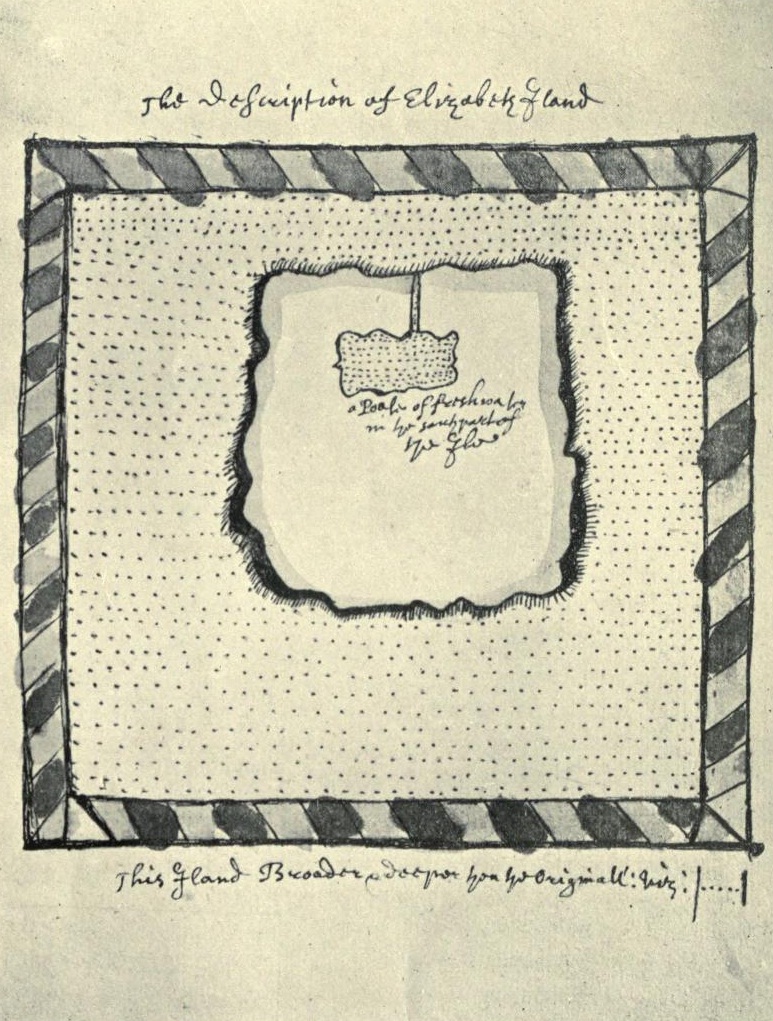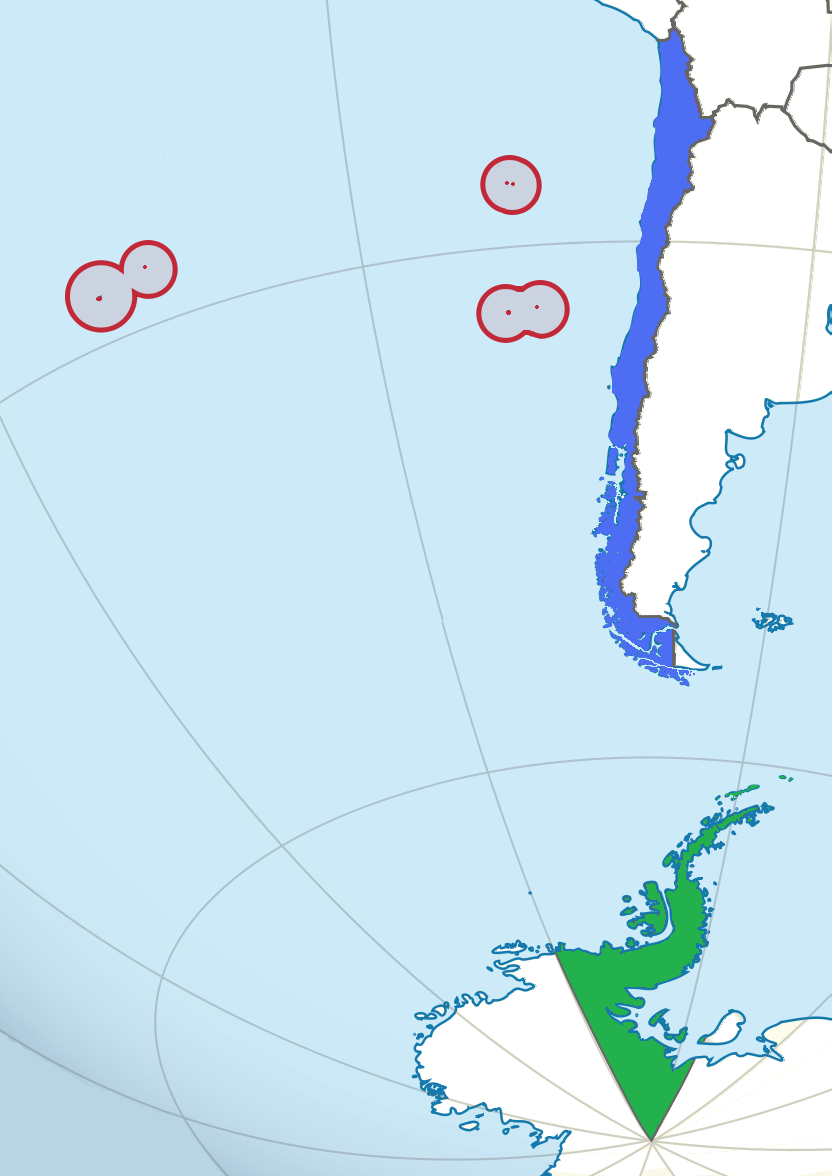|
Sars Bank
Sars Bank (named for M. Sars and G. O. Sars) is located in the Drake Passage in between the southern tip of South America and Antarctica. The bank's coordinates are , about 350 km south of Diego Ramírez Islands and 500 km from the South Shetland Islands. The top of the bank lies a few hundred meters under sea level. The bank has been proposed by Chilean historian Mateo Martinic as the location of the phantom Elizabeth Island, seen by Francis Drake's expedition in 1578. If the Sars Bank was ever above sea level it may have had significant biogeographical importance as a "bridge" between South America and Antarctica. See also *Insular Chile *Peter I Island Peter I Island ( no, Peter I Øy) is an uninhabited volcanic island in the Bellingshausen Sea, from continental Antarctica. It is claimed as a dependency of Norway and, along with Bouvet Island and Queen Maud Land, composes one of the three No ... References Guyots Landforms of Magallanes Region Undersea banks of ... [...More Info...] [...Related Items...] OR: [Wikipedia] [Google] [Baidu] |
Michael Sars
Michael Sars (30 August 1805 – 22 October 1869) was a Norwegian theologian and biologist. Biography Sars was born in Bergen, Norway. He studied natural history and theology at Royal Frederick University from 1823 and completed a cand.theol. degree in 1828. For several years he taught at a number of different schools, firstly in Christiania (now Oslo) and then in Bergen. In 1831 he was appointed vicar to Kinn Church on the Norwegian north-west coast; eight years later he transferred to Manger, just north of Bergen. Finally, in 1854 he was named professor of zoology at the University of Oslo (at that time Christiania) where he remained for the rest of his life. He died in 1869. He was married to Maren Welhaven, sister of the epic poet Johann Sebastian Welhaven in 1831, and had 7 daughters and 7 sons. Work Sars issued his first publication in 1829 – ' ("Contributions to the Natural History of Marine Animals"); a second followed in 1835 – ' ("Descriptions and Observations of s ... [...More Info...] [...Related Items...] OR: [Wikipedia] [Google] [Baidu] |
Elizabeth Island (Cape Horn)
Elizabeth Island is the name given to an island off the tip of South America visited by Sir Francis Drake in September 1578, during his circumnavigation of the globe. The island was not seen again and is regarded as a phantom. Various suggestions have been offered as to where Drake landed.L. Ivanov and N. Ivanova. Phantom Islands. In''The World of Antarctica''.Generis Publishing, 2022. pp. 74-77. Background In 1578 Drake, with a small flotilla, was seeking to enter the Pacific to attack Spanish trade there. In August 1578, he arrived at the Straits of Magellan. By September he had found his way through and entered the Pacific Ocean, only to be blown south in a series of storms. Parted from his consorts, Drake and his ship, ''Pelican'', were at latitude 57°S (from Nuno da Silva; according to Richard Hakluyt "57 and a terce", i.e. 57°20') when, on 28 October, they encountered an island, and found shelter in a haven on its eastern shore.Felix Riesenberg ''Cape Horn'' Readers ... [...More Info...] [...Related Items...] OR: [Wikipedia] [Google] [Baidu] |
Landforms Of Magallanes Region
A landform is a natural or anthropogenic land feature on the solid surface of the Earth or other planetary body. Landforms together make up a given terrain, and their arrangement in the landscape is known as topography. Landforms include hills, mountains, canyons, and valleys, as well as shoreline features such as bays, peninsulas, and seas, including submerged features such as mid-ocean ridges, volcanoes, and the great ocean basins. Physical characteristics Landforms are categorized by characteristic physical attributes such as elevation, slope, orientation, stratification, rock exposure and soil type. Gross physical features or landforms include intuitive elements such as berms, mounds, hills, ridges, cliffs, valleys, rivers, peninsulas, volcanoes, and numerous other structural and size-scaled (e.g. ponds vs. lakes, hills vs. mountains) elements including various kinds of inland and oceanic waterbodies and sub-surface features. Mountains, hills, plateaux, and plains are ... [...More Info...] [...Related Items...] OR: [Wikipedia] [Google] [Baidu] |
Peter I Island
Peter I Island ( no, Peter I Øy) is an uninhabited volcanic island in the Bellingshausen Sea, from continental Antarctica. It is claimed as a dependency of Norway and, along with Bouvet Island and Queen Maud Land, composes one of the three Norwegian dependent territories in the Antarctic and Subantarctic. The island measures approximately , with an area of ; its highest point is the ultra-prominent, Lars Christensen Peak. Nearly all the island is covered by a glacier, and it is surrounded most of the year by pack ice, making it inaccessible during these times. There is little vertebrate animal life on the island, apart from some seabirds and seals. The island was first sighted by Fabian Gottlieb von Bellingshausen on 21 January 1821 and was named for Peter I of Russia. Not until 2 February 1929 did anyone set foot on the island, when Nils Larsen and Ola Olstad's Second ''Norvegia'' Expedition, financed by Lars Christensen, was successful. They claimed it for Norway, which an ... [...More Info...] [...Related Items...] OR: [Wikipedia] [Google] [Baidu] |
Insular Chile
Insular Chile, also called ''Las islas Esporádicas'', or "the Sporadic Islands", is a scattered group of oceanic islands of volcanic origin located in the South Pacific, at some distance from mainland Chile, and which are under the sovereignty of Chile. The islands lie on the Nazca Plate, which is separate to the South American continental plate. Confusingly, the Juan Fernández Islands and the Desventuradas Islands are considered "Continental Insular Chile" (despite not being continental islands); Salas y Gómez Island and Easter Islandboth geographically situated in Polynesiaform the zone known as "Oceanic Insular Chile". All of insular Chile is administrated as part of the Valparaíso Region. History Easter Island was first inhabited by a Polynesian culture known as the Rapa Nui, and the Rapa Nui knew about Salas y Gómez Island during prehistoric times. As such, academics often group them in with Oceania rather than South America. Descendants of the ancient Rapa Nui ... [...More Info...] [...Related Items...] OR: [Wikipedia] [Google] [Baidu] |
Biogeography
Biogeography is the study of the distribution of species and ecosystems in geographic space and through geological time. Organisms and biological communities often vary in a regular fashion along geographic gradients of latitude, elevation, isolation and habitat area.Brown University, "Biogeography." Accessed February 24, 2014. . Phytogeography is the branch of biogeography that studies the distribution of plants. Zoogeography is the branch that studies distribution of animals. Mycogeography is the branch that studies distribution of fungi, such as mushrooms. Knowledge of spatial variation in the numbers and types of organisms is as vital to us today as it was to our early human ancestors, as we adapt to heterogeneous but geographically predictable environments. Biogeography is an integrative field of inquiry that unites concepts and information from ecology, evolutionary biology, taxonomy, geology, physical geography, palaeontology, and climatology.Dansereau, Pierre. 1957 ... [...More Info...] [...Related Items...] OR: [Wikipedia] [Google] [Baidu] |
Francis Drake
Sir Francis Drake ( – 28 January 1596) was an English explorer, sea captain, privateer, slave trader, naval officer, and politician. Drake is best known for his circumnavigation of the world in a single expedition, from 1577 to 1580 (the first English circumnavigation, the second carried out in a single expedition, and third circumnavigation overall). This included his incursion into the Pacific Ocean, until then an area of exclusive Spanish interest, and his claim to New Albion for England, an area in what is now the U.S. state of California. His expedition inaugurated an era of conflict with the Spanish on the western coast of the Americas, an area that had previously been largely unexplored by Western shipping. He was Member of Parliament (MP) for three constituencies; Camelford in 1581, Bossiney in 1584, and Plymouth in 1593. Queen Elizabeth I of England, Elizabeth I awarded Drake a knighthood in 1581 which he received on the ''Golden Hind'' in Deptford. In the same ... [...More Info...] [...Related Items...] OR: [Wikipedia] [Google] [Baidu] |
Phantom Island
A phantom island is a purported island which was included on maps for a period of time, but was later found not to exist. They usually originate from the reports of early sailors exploring new regions, and are commonly the result of navigational errors, mistaken observations, unverified misinformation, or deliberate fabrication. Some have remained on maps for centuries before being "un-discovered." Unlike lost lands, which are claimed (or known) to have once existed but to have been swallowed by the sea or otherwise destroyed, a phantom island is one that is claimed to exist contemporaneously, but later found not to have existed in the first place (or found not to be an island, as with the Island of California). Examples Some may have been purely mythical, such as the Isle of Demons near Newfoundland, which may have been based on local legends of a haunted island. The far-northern island of Thule was reported to exist by 4th century BCE Greek explorer Pytheas, but informati ... [...More Info...] [...Related Items...] OR: [Wikipedia] [Google] [Baidu] |
Georg Ossian Sars
Prof Georg Ossian Sars HFRSE (20 April 1837 – 9 April 1927) was a Norwegian marine and freshwater biologist. Life Georg Ossian Sars was born on 20 April 1837 in Kinn, Norway (now part of Flora), the son of Pastor Michael Sars and Maren Sars; the historian Ernst Sars was his elder brother, and the singer Eva Nansen was his younger sister.Google Translate He grew up in Manger, Hordaland, where his father was the local priest. He studied from 1852 to 1854 at Bergen Cathedral School, from 1854 at Christiania Cathedral School, and joined the university at Christiana (now the University of Oslo) in 1857. He indulged his interest in natural history while studying medicine; having collected water fleas in local lakes with Wilhelm Lilljeborg's works, he discovered new species, and this resulted in his first scientific publication. Georg Ossian Sars had a good memory and excellent drawing skills, and illustrated some of his father's zoological works. Sars was a founding investig ... [...More Info...] [...Related Items...] OR: [Wikipedia] [Google] [Baidu] |
Mateo Martinic
Mateo Martinić Beroš (born 20 October 1931) is a Chilean historian, politician and lawyer of Croatian descent. He has primarily dealt with the history of Magallanes Region. He entered the University of Chile in 1953 studying briefly pedagogy before moving on to study law and then continued his law studies in the Catholic University of Chile. He finally became a lawyer in 1983. From 1964 to 1970 he served as intendant of Magallanes Region. He received the National History Award in 2000. Together with botanist Edmundo Pisano Martnic was among the founding members of Instituto de la Patagonia which in 1985 became integrated into the University of Magallanes. Books of Mateo Martinic *''Presencia de Chile en la Patagonia Austral: 1843-1879'' (1971) *''Magallanes, síntesis de tierra y gentes'' (1972) *''Crónica de las tierras del sur del canal Beagle'' (1974) y (2005) (segunda edición revisada y aumentada) *''Origen y desarrollo de Punta Arenas entre 1848-1898'' (1974) *''Recorr ... [...More Info...] [...Related Items...] OR: [Wikipedia] [Google] [Baidu] |
Magallania
''Magallania'' is an academic journal published by the University of Magallanes. It publishes articles on social sciences and humanities regarding Patagonia, Tierra del Fuego, and Antarctica Antarctica () is Earth's southernmost and least-populated continent. Situated almost entirely south of the Antarctic Circle and surrounded by the Southern Ocean, it contains the geographic South Pole. Antarctica is the fifth-largest contine .... The journal was published annually from its establishment in 1970 until 2005 when it began to be issued twice a year. Spanish-language journals Biannual journals Academic journals published by universities of Chile Magallanes Region Publications established in 1970 1970 establishments in Chile Latin American studies journals Open access journals {{area-journal-stub ... [...More Info...] [...Related Items...] OR: [Wikipedia] [Google] [Baidu] |

.jpg)





